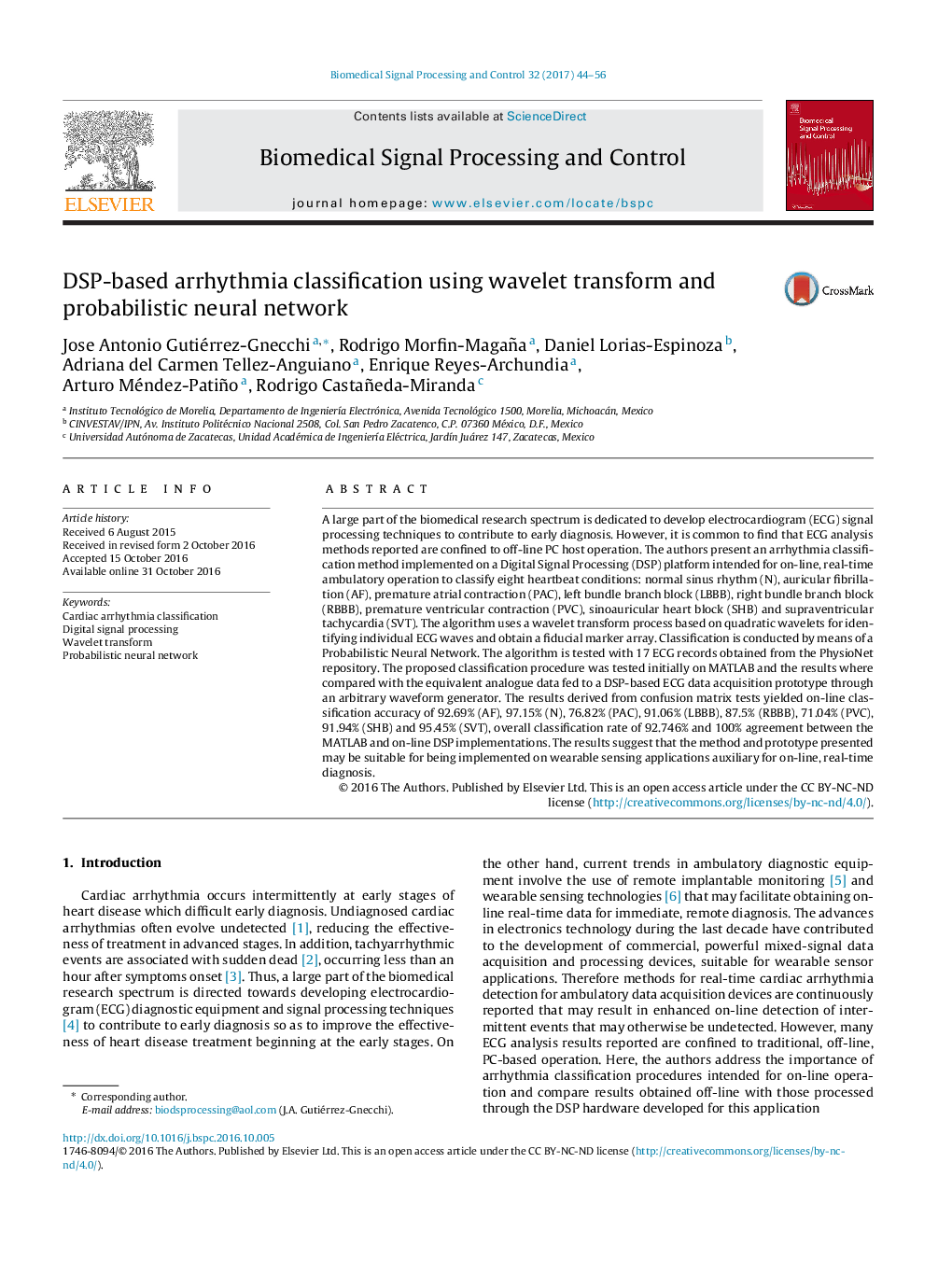| کد مقاله | کد نشریه | سال انتشار | مقاله انگلیسی | نسخه تمام متن |
|---|---|---|---|---|
| 4973513 | 1451648 | 2017 | 13 صفحه PDF | دانلود رایگان |

- An arrhythmia classification algorithm is implemented on DSP hardware.
- Based on combination of wavelet transform and probabilistic neural network.
- The algorithm classifies 8 heartbeat conditions.
- On-line classification accuracy is 92.74%.
A large part of the biomedical research spectrum is dedicated to develop electrocardiogram (ECG) signal processing techniques to contribute to early diagnosis. However, it is common to find that ECG analysis methods reported are confined to off-line PC host operation. The authors present an arrhythmia classification method implemented on a Digital Signal Processing (DSP) platform intended for on-line, real-time ambulatory operation to classify eight heartbeat conditions: normal sinus rhythm (N), auricular fibrillation (AF), premature atrial contraction (PAC), left bundle branch block (LBBB), right bundle branch block (RBBB), premature ventricular contraction (PVC), sinoauricular heart block (SHB) and supraventricular tachycardia (SVT). The algorithm uses a wavelet transform process based on quadratic wavelets for identifying individual ECG waves and obtain a fiducial marker array. Classification is conducted by means of a Probabilistic Neural Network. The algorithm is tested with 17 ECG records obtained from the PhysioNet repository. The proposed classification procedure was tested initially on MATLAB and the results where compared with the equivalent analogue data fed to a DSP-based ECG data acquisition prototype through an arbitrary waveform generator. The results derived from confusion matrix tests yielded on-line classification accuracy of 92.69% (AF), 97.15% (N), 76.82% (PAC), 91.06% (LBBB), 87.5% (RBBB), 71.04% (PVC), 91.94% (SHB) and 95.45% (SVT), overall classification rate of 92.746% and 100% agreement between the MATLAB and on-line DSP implementations. The results suggest that the method and prototype presented may be suitable for being implemented on wearable sensing applications auxiliary for on-line, real-time diagnosis.
Journal: Biomedical Signal Processing and Control - Volume 32, February 2017, Pages 44-56